AR Verbs in Spanish Explained: Endings & Common AR Verbs | 2024
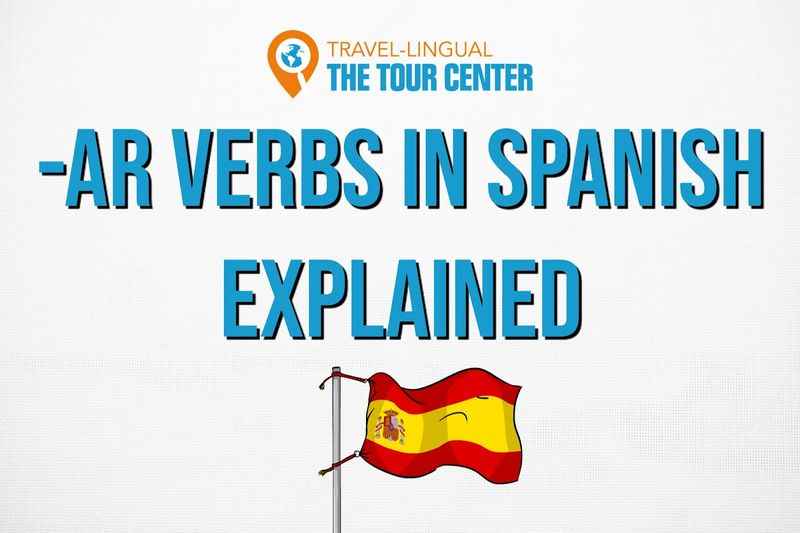
Anybody in the process of learning Spanish should know that there are 3 main verb groups: AR verbs, ER verbs, and IR verbs.
In this post, we focus on AR verbs (verbs ending in AR).
Like all verb groups in Spanish, AR verbs follow a specific conjugation pattern, with specific endings in the regular form.
In the next few minutes, you'll learn the following:
- How AR verbs in Spanish end in various tenses.
- What this looks like in practice and how to use these examples to boost your language skills.
- What regular, irregular, and stem-changing verbs are, and why it's important to learn them.
- How this knowledge benefits you for travel to a Spanish-speaking country.
What Makes a Verb Regular?
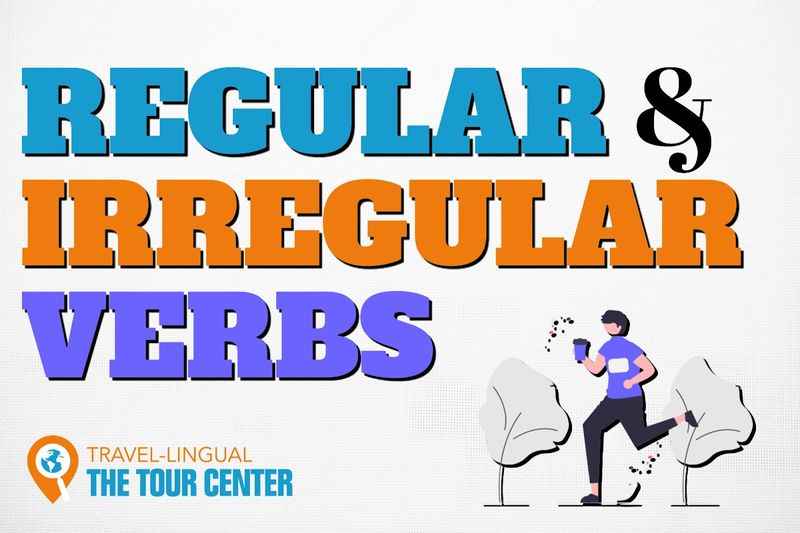
Believe it or not, understanding regular and irregular verbs is actually relatively straightforward.
A regular verb is a verb that follows a normal and regular pattern when conjugated. An irregular verb, on the other hand, does not follow a normal or regular pattern when conjugated.
The great thing about regular verbs is that once you have learned the correct endings, you will be able to conjugate any other regular verb.
Shortly, we will see what this looks like in practice.
What is Conjugation?

If you have not come across the term 'conjugation' before then do not worry. It's very simple.
A verb conjugation is a set of endings and word changes that signify who is being referred to.
When learning a new verb, it's important to learn how to conjugate it in the Spanish present tense, or any tense for that matter.
Let's take the infinitive of the verb "to walk". Note that in English the conjugation is as follows. We have included the subject pronouns.
Infinitive: To Walk
I walk
You walk
He/ she/ it walks
We walk
They walk
Note that the ending changes in the third person.
The infinitive form of the verb "to walk" ****in the Spanish language is caminar. The conjugations of this verb in the present tense are as follows.
Infinitive: Caminar
Yo camino
Tú caminas
Él/ ella/ usted camina
Nosotros caminamos
Vosotros camináis
Ellos/ ellas/ ustedes caminan
Regular AR verbs in Spanish
Now, let's take a look at the most common verbs in Spanish:
Mirar
Meaning: to watch

Escuchar
Meaning: to listen

Gritar
Meaning: to shout

Desayunar
Meaning: to have breakfast

Almorzar
Meaning: to have lunch

Cenar
Meaning: to have dinner

Regalar
Meaning: to gift

Ayudar
Meaning: to help

Amar
Meaning: to love

Odiar
Meaning: to hate

Manejar
Meaning: to drive

Trabajar
Meaning: to work
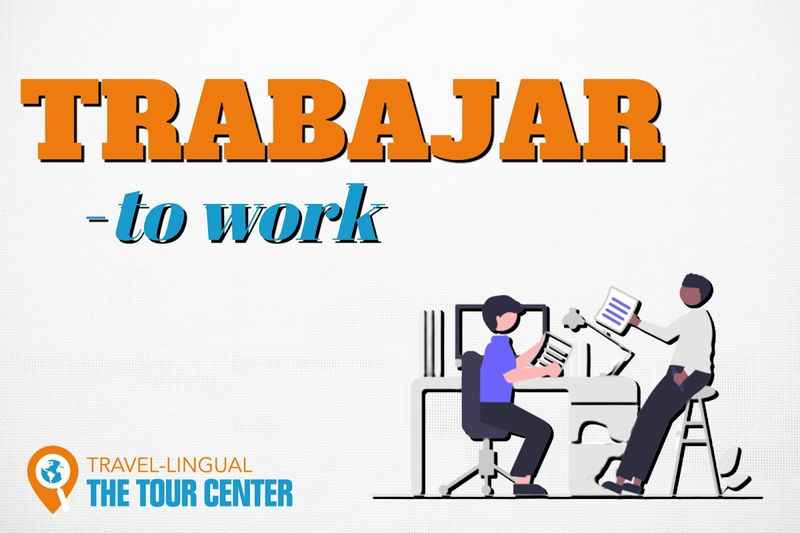
Caminar
Meaning: to walk

Festejar
Meaning: to celebrate

How to Conjugate AR Verbs in Spanish: 6 Different Endings

Obviously, we cannot cover the conjugations of all AR verbs in Spanish throughout this post.
Luckily, however, we don't actually need to. Once you have learned the regular endings, you will be able to conjugate any regular AR verb in Spanish.
AR Verb Endings
Here are the endings for regular AR verbs in Spanish. We will use trabajar ("to work") as the example verb:
Trabaj(ar)
Yo trabajo
Tú trabajas
Él/ ella/ usted trabaja
Nosotros trabajamos
Vosotros trabajáis
Ellos/ ellas/ ustedes trabajan
Example Verbs
Now, take a look at the AR verbs below in their infinitive form. Try to conjugate them yourself in the present tense (or el presente).
We have highlighted the two letters in each verb that will be removed and replaced with the regular verb endings.
Take away these letters and replace them with the relevant endings, which you will find above.
- Limpi(ar)
- Alcanz(ar)
- Festej(ar)
- Camin(ar)
The 12 Most Common AR Verbs in Spanish
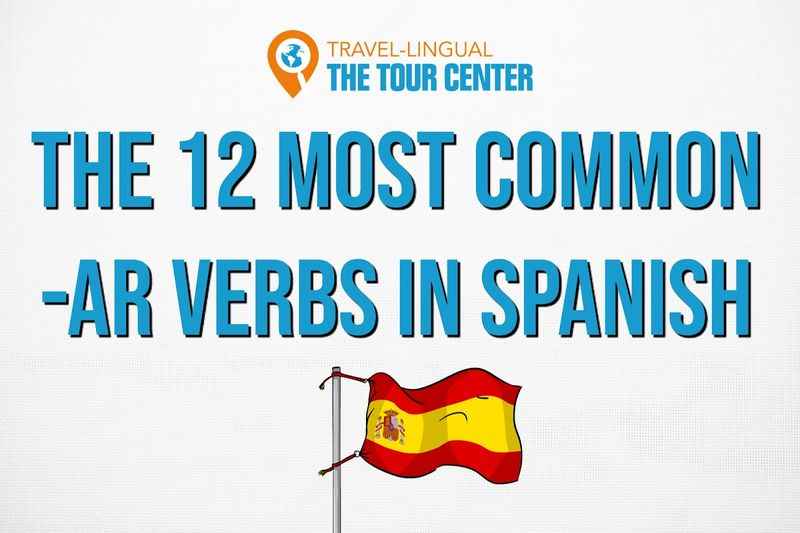
Here, we list the most common regular and irregular AR verbs in Spanish.
Hablar
Meaning: to talk

Enseñar
Meaning: to teach

Estudiar
Meaning: to study

Dibujar
Meaning: to draw

Tocar
Meaning: to play an instrument

Caminar
Meaning: to walk

Cantar 25
Meaning: to sing
Utilizar
Meaning: to use

Bailar
Meaning: to dance

Practicar
Meaning: to practice

Comprar
Meaning: to buy

Using the formula above, try to conjugate these AR verbs by removing the -ar at the end of each word and replacing it with the relevant endings.
Spanish AR Verb Endings in the Simple Present Tense: "You"
Let's take the normal verb hablar to see its form in the simple present tense with each appropriate ending.
Remember, in Spanish, there is a formal and informal way to say "you" in the singular and plural forms.
With the AR verb hablar, this looks like the below:
Usted habl(a)
Ustedes (habl(an)
If you are using Latin American Spanish then you are unlikely to use the vosotros form.
If you are learning or planning to use European Spanish or speak Spanish in Europe, then you will need to learn the vosotros form.
This is not exclusive to AR verbs in Spanish.
What is an Irregular Verb?
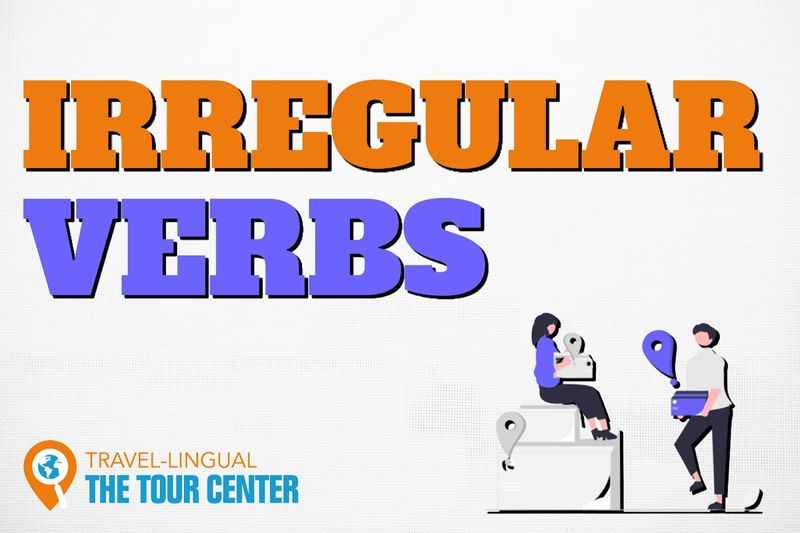
Do you remember that earlier in the article we were discussing regular and irregular verbs?
We learned that a regular verb follows normal, regular endings, whilst an irregular verb does not.
So, an irregular verb is a verb that does not follow the standard pattern for conjugation.
A Spanish irregular verb may have a different ending or stem change than what is normally seen in Spanish verbs, and these changes will affect how the conjugated form of the verb ends and sounds.
Common Irregular AR Verbs in Spanish
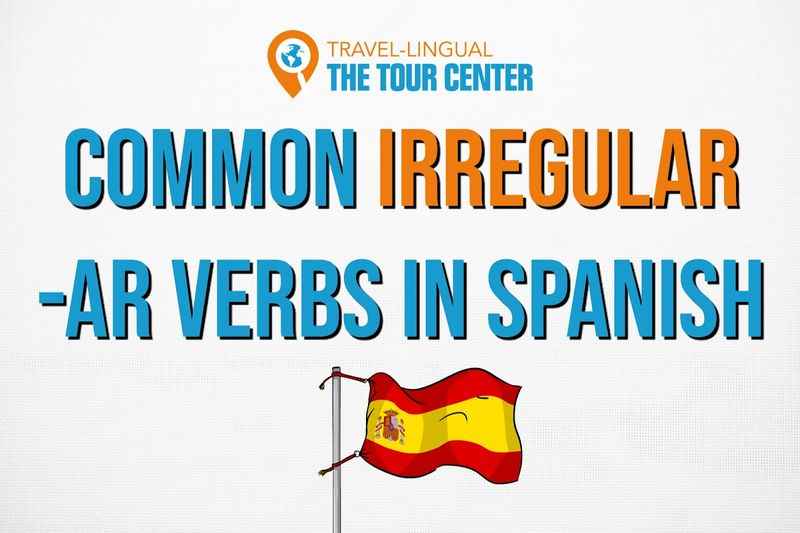
Below, you'll see a list of common irregular AR verbs. It is difficult to learn these because they do not follow a formula, so they need to be learned and memorized individually.
Estar
Meaning: to be
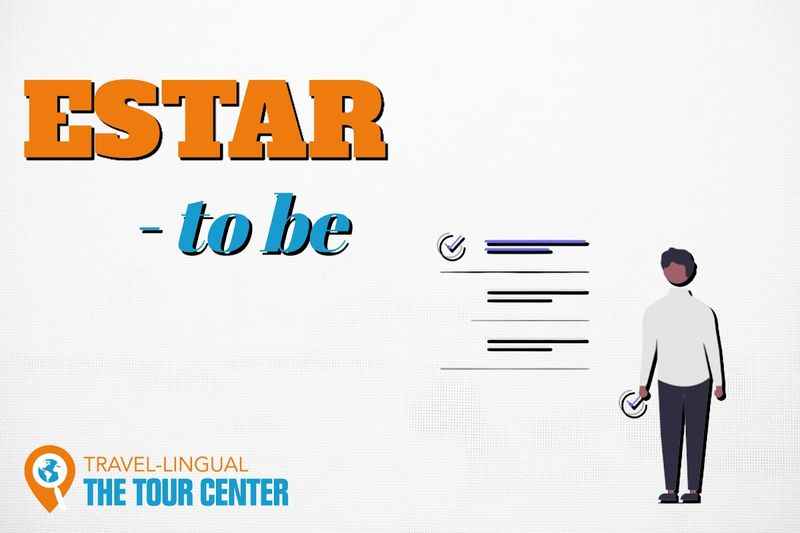
Comenzar
Meaning: to start

Negar
Meaning: to deny

Dar
Meaning: to give

Jugar
Meaning: to play

Despertar
Meaning: to wake up

Mostrar
Meaning: to show

Pensar
Meaning: to think

Recordar
Meaning: to remember

Soñar
Meaning: to dream

Volar
Meaning: to fly

Let's see a few examples of some of these with their stem changes in the simple present tense.
Note that stem-changing verbs are still irregular, but do follow similar patterns, so can be grouped together for context.
What are Stem-Changing Verbs in Spanish?

In Spanish, many verbs undergo a stem change when conjugated (in the simple present and past tense).
This often takes place without affecting the ending of the conjugated form, so it's a little confusing at times.
Stem-changing verbs in the present tense use the same endings as regular -AR, -ER, and -IR verbs when conjugated.
However, there is a vowel change in the last syllable of the stem.
But what does this look like in practice for -AR verbs?
Let's take a look at pensar ("to think").
Yo pienso
Tú piensas
Él/ ella/ usted piensa
Nosotros pensamos
Vosotros pensáis
Ellos / ellas/ ustedes piensan
Common AR Verbs with e > ie Changes
 ie Changes">
ie Changes">
Looking at the pattern above, you should see the clear formula to follow when conjugating stem-changing verbs. Below you will find a list of other verbs which follow the e > ie stem change.
Try writing your own tables, as above, with the verbs you see below.
Despertarse
Meaning: to wake up
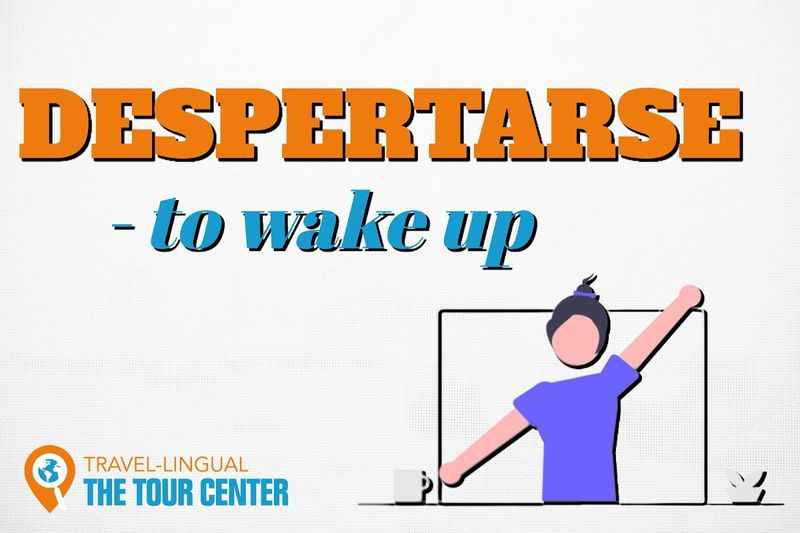
Fregar
Meaning: to wash/scrub
🇪🇸 encerrar

Meaning: to lock up/put away
Nevar
Meaning: to snow

Sentarse
Meaning: to sit down

Tropezar
Meaning: to stumble/fall over

Calentar
Meaning: to heat up

Helar
Meaning: to freeze

Remendar
Meaning: to mend

AR Verb Endings in the Past Tense (Preterite)
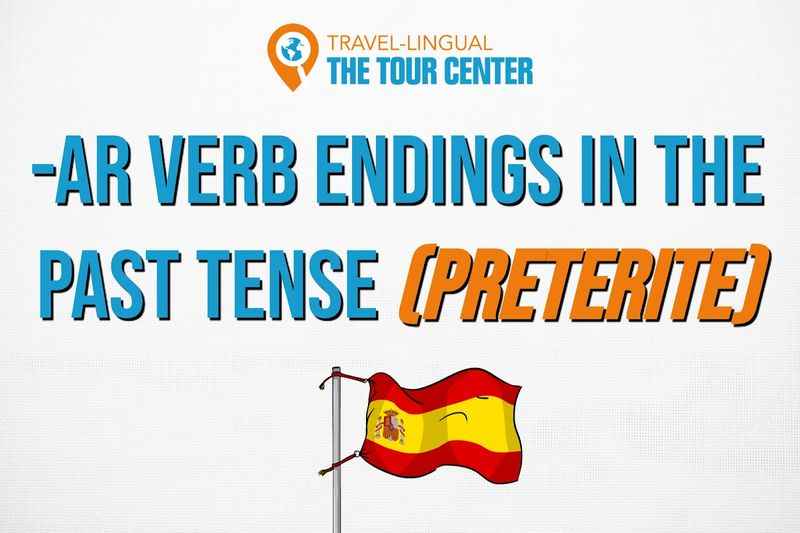
The preterite tense is used to describe actions that have already taken place. It is the simple past tense in Spanish.
In English, an example of this tense would be “I drove the car.”
For more on how to use the Spanish preterite, see our guide on the imperfect vs the preterite.
Conjugating a regular AR verb in the preterite tense is a little more difficult than in the simple present tense.
Let's look at the verb caminar, which has the verb stem camin-.
Each verb ending is as follows:
Caminé
Caminaste
Caminó
Caminamos
Caminasteis
Caminaron
You can see from the conjugated forms of caminar in the simple past tense that it follows a logical pattern. Practice these endings in your free time to master them.
Simple Future Tense Endings

The future tense is one of the easiest tenses to master in the Spanish language.
Instead of taking away the AR at the end of the verb (as we have seen so far), simply add the ending to the full infinitive form for future verb conjugations.
Let's use the verb viajar.
Observe the simple future conjugation in the following verb endings.
Viajaré
Viajarás
Viajará
Viajaremos
Viajaréis
Viajarán
Try it now with some more regular AR verbs in Spanish! By incorporating new verbs and conjugations into your daily practice, you can memorize them quickly and easily.
Why Learn Verb Conjugations: Travel and Communication

Learning conjugations is immensely helpful for travel in Spanish-speaking countries. Conjugating verbs allows you to communicate effectively and express yourself in various situations.
By knowing how to conjugate verbs, you can ask for directions, order food, book accommodations, engage in conversations, and navigate public transportation.
Conjugations enable you to adapt your language to different tenses, moods, and persons, making your speech more accurate and nuanced.
ou can express past experiences, future plans, desires, suggestions, and more. This knowledge empowers you to connect with locals, build rapport, and gain a deeper understanding of the culture.
Mastering verb conjugations expands your linguistic repertoire, boosting your confidence to explore and engage in authentic interactions, and making your travel experiences richer and more rewarding.
FAQs About Regular AR Verbs in Spanish
Now, let's take a look at some frequently asked questions about conjugations in Spanish and -ar verbs.
What is an AR verb in Spanish?
An AR verb in Spanish is a verb that belongs to the first conjugation group and ends in -ar. These verbs undergo regular conjugation patterns when used in different tenses and persons. We have looked at the regular endings of -ar verbs in the present tense, simple past tense, and future tense. To native speakers, these verb endings are intuitive, but for learners, they must be learned and memorized.
How many Spanish verbs end in AR?
The majority of Spanish verbs, approximately 75%, end in -ar. This makes -ar the most common verb ending in the Spanish language. For this reason, it makes sense to learn these verb endings first. The more new words you learn ending in -ar, the broader your useful Spanish vocabulary will be. Look up example sentences using -ar verbs for more practice.
What are 5 AR verbs in Spanish?
Five examples of -ar verbs in Spanish are hablar (to speak), caminar (to walk), estudiar (to study), llegar (to arrive), and mirar (to look/watch). These are all useful words to know and it is worth learning their conjugations by heart.
Are AR verbs the easiest to learn in Spanish?
Yes, -ar verbs are generally considered easier to learn in Spanish compared to -er and -ir verbs, as they follow more predictable conjugation patterns. However, overall ease of learning varies depending on an individual's learning style and linguistic background.
When learning new languages, all learners stumble on different hurdles. Practice and consistency with your studies are key.
Summing Up AR Verbs in Spanish: What We've Learned
And that's a wrap!
Thank you for reading this post on -ar verbs in Spanish. We hope that these explanations have helped to clarify some of the most common questions and confusions around conjugating regular, irregular, and stem-changing verbs.
Please do share this article if you have found it helpful.
Learning to conjugate verbs in Spanish is crucial for effective communication. It allows you to express yourself accurately, engage in conversations, and understand others.
Conjugations enable you to navigate various tenses, moods, and persons, enhancing your language skills and opening doors to authentic interactions and deeper cultural understanding.
Remember to continue to use these verbs in your spoken Spanish as much as possible. Additionally, you can use the lists above to master the endings.







